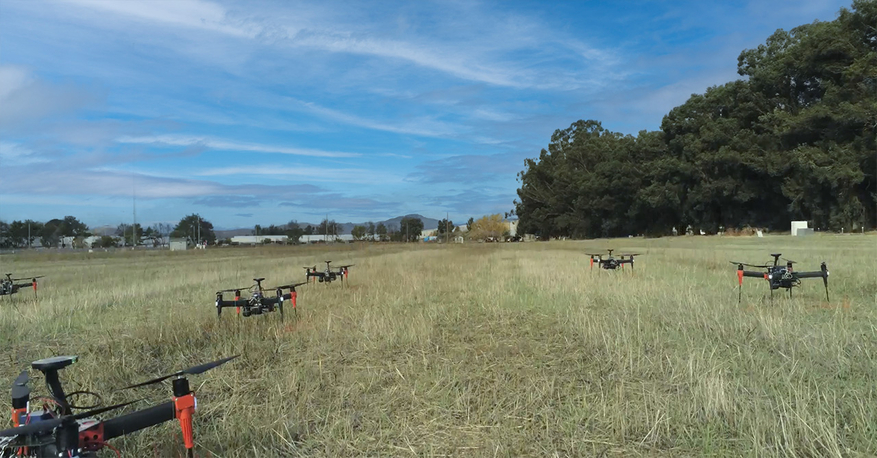Imagine a cluster of buzzing drones weaving through tight alleyways, whipping up curiosity among children peering from corrugated metal rooftops, transforming once-neglected spaces into living laboratories. That’s the heart of Augmented Field Labs, a novel initiative using low-cost drone swarms to teach ecology in urban slums. What feels like science fiction is becoming science education in the most underserved places—and the impact is profound.
Augmented Field Labs takes humble but powerful tools—small, affordable drones flying in coordinated groups—and turns them into instruments of both discovery and empowerment. Instead of biology being confined to textbooks and classrooms, ecology becomes visible: air quality, green cover, waste patterns, water flow—all made real from above, often for the first time. In slums where trees are rare, infrastructure is informal, and environmental data is scarce, this kind of hands-on learning can change everything.
Table of Contents

Why Urban Slums Need Augmented Field Labs
In many fast-growing cities, slums are underserved not only in basic services but in education and environmental information. The residents often face polluted air, unsafe water, overflowing waste, and flooding—all while lacking reliable maps or ecological baseline data. Traditional ecology classes, even when available, are abstract and inaccessible: leaf structures, food chains, plant physiology are taught, yes, but rarely with anything from the student’s lived environment.
This is where Augmented Field Labs steps in. Students get to control drones, map local green spaces, measure pollution, trace water in drainage channels, and observe how human activity shapes the natural environment around them. It becomes ecology they can touch, see, and relate to. This approach does more than teach—it validates their environment, shows them that the place they live is worth studying and improving.
How the Drone Swarms Work in Practice
Putting Augmented Field Labs into motion isn’t trivial—but it is entirely doable with today’s technology. Key components include:
- Low-cost drones: Affordable multirotor drones equipped with basic sensors (cameras, perhaps air quality sensors) which can be deployed in swarms. The cost barrier, once high, is now low enough that schools or community groups can aspire to use them.
- Swarm coordination: The drones fly not one-by-one but in coordinated groups, covering more area, getting diverse angles, and creating richer data sets. They can map green cover, capture aerial photos for creating orthomosaics, monitor water channels, or track waste accumulation.
- Local involvement and training: Crucially, Augmented Field Labs installs local capacity. Students, teachers, or youth leaders are trained to operate the drones, interpret the data, and even maintain or repair equipment. It becomes a part of the community, not a foreign intervention.
- Curriculum integration: Augmented Field Labs works best when integrated into school or after-school programs. Ecology topics are taught alongside drone data collection: measuring vegetation, classifying land use, and studying environmental change over time.
- Ethical and safety safeguards: Flying drones in dense urban slums demands care—ensuring privacy, avoiding hazards to people, and securing flight permissions. The Labs involve community consent and clear guidelines to ensure that data gathering is transparent, respectful, and safe.

Outcomes, Impacts, and Future Directions
The effects of Augmented Field Labs are already being felt in places where pilot projects have started:
- Awareness and agency: Students become more aware of environmental issues in their neighbourhoods—flood risk, pollution hotspots, lack of green cover—and feel empowered to map, monitor, and advocate for improvements.
- Skill building: Drone operation, basic data analysis, spatial thinking: these are valuable technical and scientific skills. For many students in slums, this opens up pathways they didn’t know existed.
- Community utility: The data collected isn’t just for class. Local leaders or NGOs can use drone maps for planning, waste management, and flood mitigation. Sometimes the drone data helps people get municipal attention for services they’ve lacked.
- Research possibilities: Longitudinal data from Augmented Field Labs could help ecologists understand micro-climates, urban heat islands, ecosystem fragmentation, and how human actions in tight urban settings affect biodiversity and health.
Looking ahead, scaling Augmented Field Labs invites challenges but also exciting prospects. Cost will go down further. Sensor tech will become more compact, more powerful. Swarm algorithms will get better at avoiding collisions and sharing data. Partnerships with local governments and NGOs could formalise the role of drone ecology in urban policy.
Challenges & What’s Needed for Scaling
Of course, there are real obstacles. Here are some of them—and how Augmented Field Labs is or can respond:
| Challenge | How Augmented Field Labs Responds / Needs to Respond |
|---|---|
| Costs and maintenance | Though the drones are low-cost, replacement parts, batteries, sensors still cost. Labs need sustainable funding, local repair resources. |
| Technical expertise | Training is essential. Teachers may be unfamiliar with drones or data analysis. Augmented Field Labs must build ongoing mentorship and support networks. |
| Regulation and safety | Airspace rules, permission to fly over certain areas, privacy concerns must all be addressed. Labs need to engage with municipal authorities and communities. |
| Community buy-in | Residents must trust what is being done. Transparency, consent, and inclusion are non-negotiable. Data must be used in ways that benefit the people whose lives it maps. |
| Integration with education systems | Schools’ curricula are often rigid. To make Augmented Field Labs sustainable, integration or recognition by educational authorities helps. |

Conclusion
In a world where ecology education too often remains remote from the places that need it most, Augmented Field Labs draws that knowledge home. By using low-cost drone swarms, these Labs turn slum environments—aerial view, tangled alleys, scattered greenery—into classrooms without walls. Students don’t just learn about ecology; they gather data, tell stories, chart maps, and shape the environmental future of where they live.
With investment, care, and collaboration, Augmented Field Labs may become a model not only for urban slums, but for underserved environments everywhere—bringing ecology to people, and people to ecology.
Join Our Social Media Channels:
WhatsApp: NaijaEyes
Facebook: NaijaEyes
Twitter: NaijaEyes
Instagram: NaijaEyes
TikTok: NaijaEyes













![Heartwarming Moment: Priscilla Ojo and Son Rakeem Reunite with Juma Jux in Tanzania [VIDEO] Priscilla Ojo](https://naijaeyesblog.com/wp-content/uploads/2025/09/Reunited-Priscilla-Ojo-says-as-she-celebrates-son-Rakeem-one-month-Kemi-Filani-blog-min-768x512-1-1-180x135.avif)


























